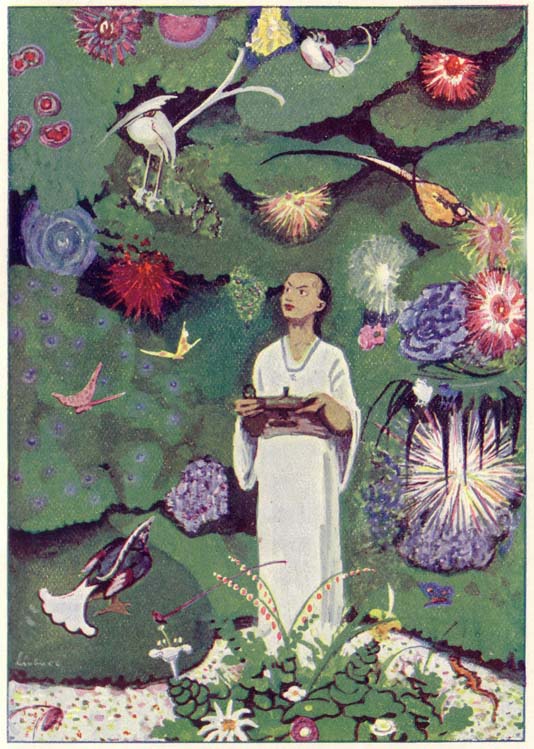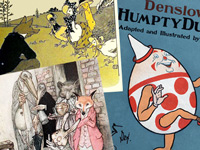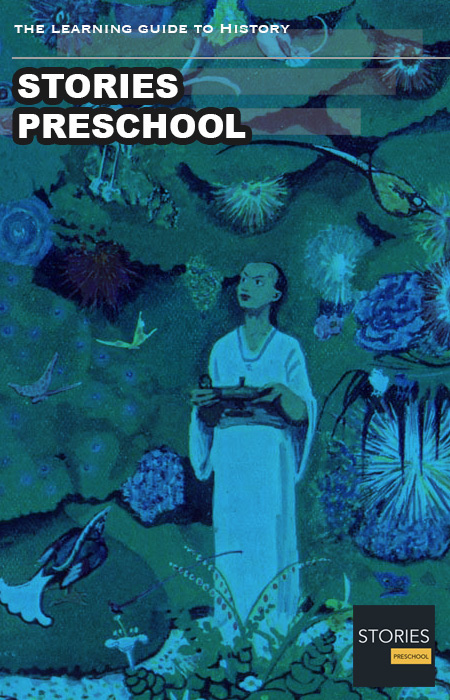Aladdin

Aladdin is a Middle Eastern folk tale. It is one of the tales in The Book of One Thousand and One Nights ("The Arabian Nights"), and one of the best known—though it was actually added to the collection in the 18th century by Frenchman Antoine Galland.
Plot summary
Aladdin is an impoverished young ne'er-do-well dwelling in "one of the cities of China". He is recruited by a sorcerer from the Maghreb, who passes himself off as the brother of Aladdin's late father, Mustapha the tailor, convincing Aladdin and his mother of his good will by pretending to set up the lad as a wealthy merchant. The sorcerer's real motive is to persuade young Aladdin to retrieve a wonderful oil lamp from a booby-trapped magic cave. After the sorcerer attempts to double-cross him, Aladdin finds himself trapped in the cave. Fortunately, Aladdin is still wearing a magic ring the sorcerer has lent him. When he rubs his hands in despair, he inadvertently rubs the ring and a jinnī (or "genie") appears who releases him from the cave so that he can return to his mother, fortunately still carrying the lamp. When his mother tries to clean the lamp, so they can sell it to buy food for their supper, a second far more powerful genie appears who is bound to do the bidding of the person holding the lamp.
With the aid of the genie of the lamp, Aladdin becomes rich and powerful and marries Princess Badroulbadour, the sultan's daughter (after magically foiling her marriage to the vizier's son). The genie builds Aladdin and his bride a wonderful palace, far more magnificent than the sultan's.
The sorcerer hears of Aladdin's good fortune, and returns; he gets his hands on the lamp by tricking Aladdin's wife (who is unaware of the lamp's importance) by offering to exchange "new lamps for old." He orders the genie of the lamp to take the palace, along with all its contents, to his home in the Maghreb. Fortunately, Aladdin still has the magic ring and is able to summon the lesser genie. The genie of the ring cannot directly undo any of the magic of the genie of the lamp, but he is able to transport Aladdin to the Maghreb where, with the help of the "woman's wiles" of the princess he recovers the lamp and slays the sorcerer, returning the palace to its proper place.
The sorcerer's more powerful and evil brother plots to destroy Aladdin for killing his brother by disguising himself as an old woman known for her healing powers. Badroulbadour falls for his disguise and commands the "woman" to stay in her palace in case of any illnesses. Aladdin is warned of this danger by the genie of the lamp and slays the imposter. Everyone lives happily ever after, Aladdin eventually succeeding to his father-in-law's throne.
Sources and setting
No Arabic source has been traced for the tale, which was incorporated into the book Les Mille et Une Nuits by its French translator, Antoine Galland, who heard it from a Syrian storyteller from Aleppo. Galland's diary (March 25, 1709) records that he met the Maronite scholar, by name Youhenna Diab ("Hanna"), who had been brought from Aleppo to Paris by Paul Lucas, a celebrated French traveller. Galland's diary also tells that his translation of "Aladdin" was made in the winter of 1709–10. It was included in his volumes ix and x of the Nights, published in 1710.
John Payne, in Aladdin and the Enchanted Lamp and Other Stories (London 1901), gives details of Galland's encounter with the man he referred to as "Hanna" and the discovery in the Bibliothèque Nationale in Paris of two Arabic manuscripts containing Aladdin (with two more of the "interpolated" tales). One was written by a Syrian Christian priest living in Paris, named Dionysios Shawish, alias Dom Denis Chavis. The other is supposed to be a copy Mikhail Sabbagh made of a manuscript written in Baghdad in 1703. It was purchased by the Bibliothèque Nationale at the end of the nineteenth century. However, modern scholars such as Muhsin Mahdi and Husain Haddawy claim that both manuscripts are forgeries - "back-translations" of Galland's text into Arabic.
The opening sentences of the story, in both the Galland and the Burton versions, set it in China and imply, at least, that Aladdin is Chinese. On the other hand, there is nothing in the rest of the story that is inconsistent with a Persian or Arabian setting. For instance, most of the people in the story are Muslims, and their conversation is larded with devout Muslim platitudes. A Jewish merchant buys Aladdin's wares (and incidentally cheats him), but there is no mention of Buddhists or Confucians (or other distinctively Chinese people). The Sultan is referred to as such rather being called the "Emperor", as in some re-tellings. In spite of this rather tenuous link, some commentators have suggested that the story might be set in Turkestan (encompassing Central Asia and the modern Chinese province of Xinjiang), but this speculation depends on a knowledge of China that the teller of a folk tale (as opposed to a geographic expert) might well not possess.
LITERATURE FAIRY TALES

Aladdin in the Magic Garden, an illustration by Max Liebert from Ludwig Fulda's Aladin und die Wunderlampe

Aladdin in the Magic Garden, an illustration by Max Liebert from Ludwig Fulda's Aladin und die Wunderlampe
( Click image to enlarge)
A fairy tale is a type of short story that typically features folkloric fantasy characters, such as dwarves, elves, fairies, giants, gnomes, goblins, mermaids, trolls, or witches, and usually magic or enchantments. Fairy tales may be distinguished from other folk narratives such as legends (which generally involve belief in the veracity of the events described) and explicitly moral tales, including beast fables. The term is mainly used for stories with origins in European tradition and, at least in recent centuries, mostly relates to children's literature.
Read More » List of Fairy tales »
RESOURCES
This article uses material from the Wikipedia articles "List of fairy tales", "Fairy tale" and "Aladdin", which is released under the Creative Commons Attribution-Share-Alike License 3.0.
© Stories Preschool. All Rights Reserved.






